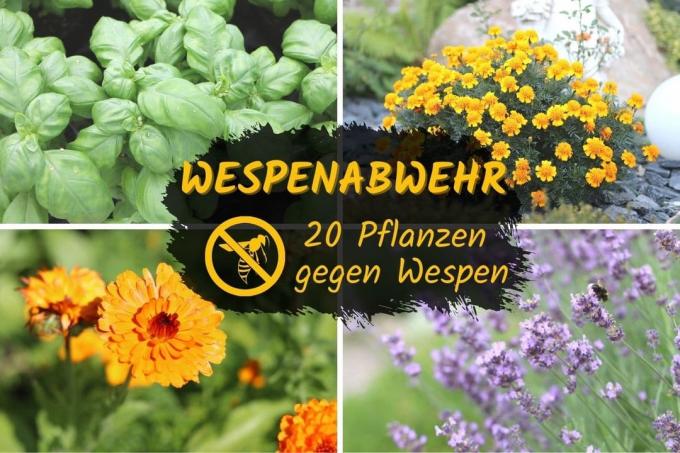
table of contents
- Drive away wasps naturally
- Plants against wasps
- Herbs
- Vegetables
- More plants against wasps
- frequently asked Questions
Wasps can be a nuisance, especially in summer. No coffee table or grill buffet is spared from them. Chemical agents should not be used immediately to repel wasps; plants can also keep them away. These 20 plants are effective against wasps.
In a nutshell
- Wasps are based on smells
- the power of various plants can be used to repel wasps
- Essential oils contained in plants deter insects
- Simply plant plants in the bed or tub near the terrace or balcony to ward off pests
Drive away wasps naturally
Wasps can be extremely annoying when they are outdoors, especially in the summer months. They are quickly there when they hear the first scents. To ward off the pests, the chemical club should not be used immediately, but there are some household remedies to keep the animals away. Different plants can do a good job of repelling wasps. This plant scent is quite pleasant for humans, but the wasps do not like it at all and quickly run away. The scents of released essential oils are particularly hated. However, it must always be ensured that such scents are not covered by others, as otherwise the use of the plants against wasps has only a minor effect.
Note: Wasps are under protection. You and your Nests must not be harmed or killed. Those who do, face high fines.
Plants against wasps
The following is a small list of plants that cause wasps to flee when they are used:
Herbs
The most varied of herbs usually give off an extremely intense smell. The reason for this are the essential oils contained in the plant parts. These are particularly effective when the leaves come into contact or rub. Even a plant in the pot or a few stems in the vase are extremely effective against the wasps.
Basil (Ocimum basilicum)

- Habit: annual, square stems, oval-lanceolate leaves, white flowers in pseudo whorls
- Height: 15 to 50 cm
- Flowering period: June to September
- Location: sunny to partially shaded, well-drained soil
- Special feature: intense fresh and spicy smell
Real lavender (Lavandula angustifolia)

- Habit: subshrub, tomentose, hairy leaves, blue-violet flowers
- Height: 40 to 70 cm
- Flowering period: June to August
- Location: sunny and warm, loose soil
- Special feature: easy to cultivate in pots and tubs
Note: Especially in real lavender (L. angustifolia) and in Speick lavender (L. latifolia) the concentration of essential oils is particularly high. The plants are therefore well suited for fighting wasps.
Eucalyptus (Eucalyptus globulus)
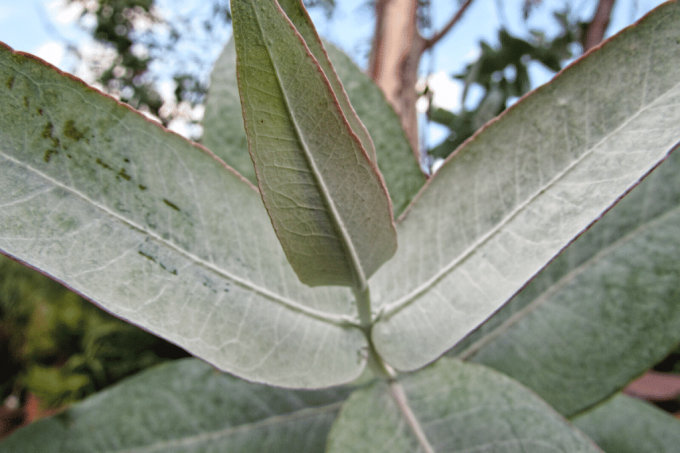
- Habit: evergreen, perennial, shrub, silver-gray, soft leaves, white flowers
- Height: 200 to 300 cm
- Flowering period: July to October
- Location: sunny, nutrient-rich soils
- Special feature: container plant, overwintered light, between 0 ° C and 20 ° C
Common catnip (Nepeta cataria)

- Habit: perennial, gray-green, serrated and hairy leaves, white flowers with purple markings
- Height: 20 to 50 cm
- Flowering period: July to September
- Location: sunny, moist soil, can be kept in a bucket
- Special feature: contains essential oil nepetalactone, camphor-like thyme aroma
Peppermint (Mentha x piperita)
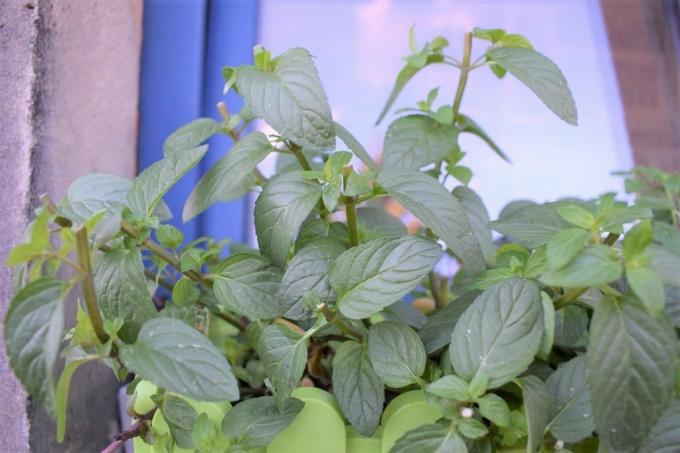
- Habit: perennial, reddish square stems, light purple to purple flowers
- Height: 10 to 100 cm
- Flowering period: June to September
- Location: sunny to partially shaded, sandy, humus soil
- Special feature: menthol-like ingredients
Pennyroyal (Mentha pulegium)

- Habit: perennial, narrow, egg-shaped leaves, purple flowers in pseudo whorls
- Height: 10 to 50 cm
- Flowering period: May to September
- Location: sunny to partially shaded, moist soil
- Special feature: not edible, slightly toxic, mint-like odor, previously used as a disinfectant
Rosemary (Rosmarinus officinalis)
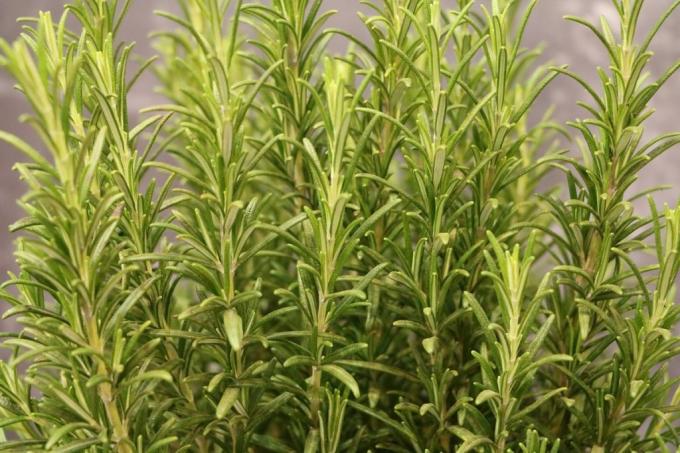
- Habit: evergreen subshrub, angular stems, narrow leaves, light blue blossoms, also white and pink
- Height: 50 to 100 cm
- Flowering period: April to September
- Location: sunny, loose sandy soil
Note: Rosemary drives away wasps, but attracts bees. Therefore, the shrub should not be planted right next to flowers.
Thyme (thymus vulgaris)
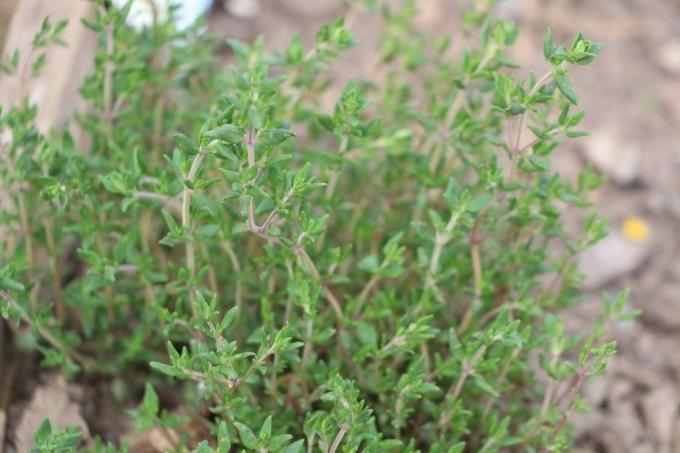
- Habit: perennial, woody small shrub, elongated leaves, tomentose underside, whitish to light red flowers
- Height: 5 to 30 cm
- Flowering period: June to August
- Location: sunny, well drained soil
Wormwood (Artemisia absinthium)
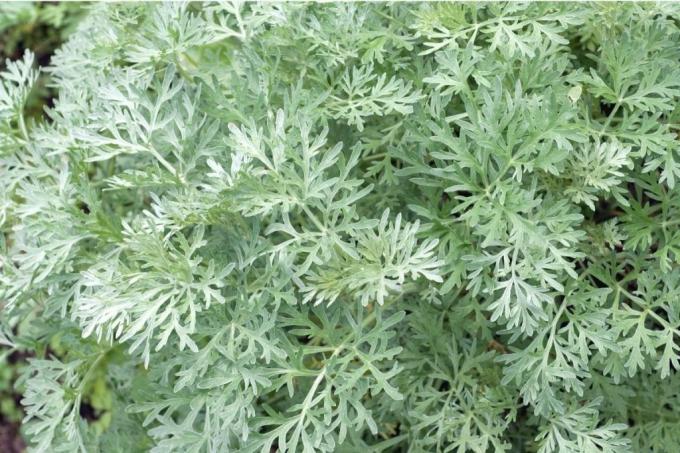
- Habit: perennial shrub, silver-gray, pinnate leaves, yellow flowers in panicles
- Height: 60 to 150 cm
- Flowering period: June to September
- Location: sunny, sandy soils
Lemongrass (Cymbopogon citratus)

- Habit: perennial, evergreen, linear, rough leaves, white-yellowish flowers
- Height: 30 to 100 cm
- Flowering period: August to September, rarely flowering in cultivation
- Location: sunny to partially shaded, humus soil
Lemon balm (Melissa officinalis)
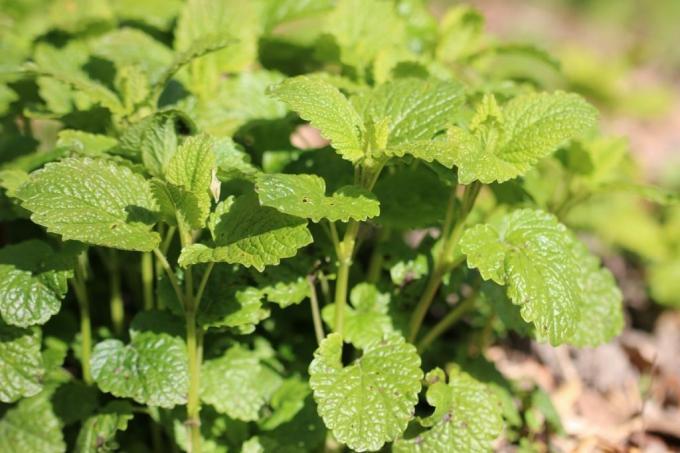
- Habit: perennial, square hairy stems, sawn leaves, white to reddish flowers
- Height: 40 to 90 cm
- Flowering period: June to August
- Location: sheltered from the wind, sunny, humus soils
Lemon verbena (Aloysia citradora)

- Habit: shrub, bushy, upright, rough, lanceolate leaves, white flowers in terminal panicles
- Height: 100 to 250 cm
- Flowering period: July to August
- Location: sunny, sheltered from the wind, overwintered at 5 ° C
Note: Alternatively, the essential oils of these plants can also be used in a fragrance lamp.
Vegetables
Some vegetables are also effective against wasps. This includes
Cucumber (Cucumis sativus)
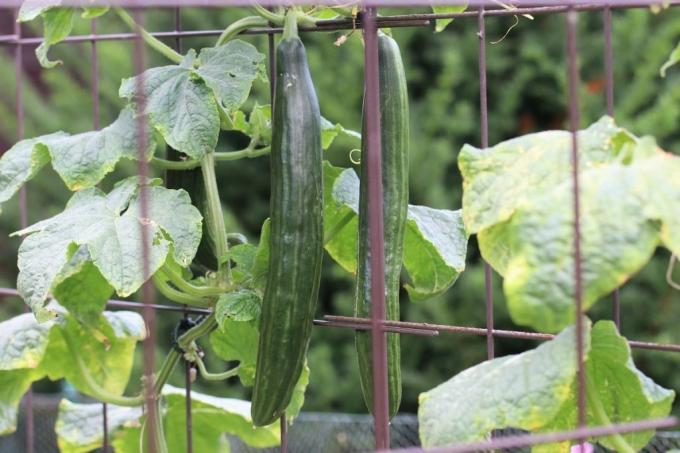
- Habit: annual, bristly hairy, stalked leaves, yellow flowers, 10 to 60 cm long cylindrical fruits
- Height: prostrate or climbing, tendrils up to 4 m in length
- Location: sunny, sheltered from the wind
- Special feature: the plant exudes bitter substances
Tomatoes (Solanum lycopersicum)
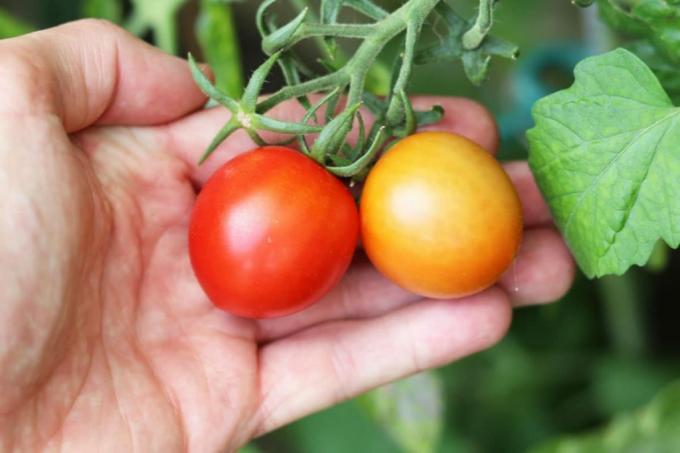
- Habit: annual, branched stems, dark green leaves, yellow, red or multicolored fruits
- Height: bushy or tall between 2 and 3 m
- Location: full sun, sheltered from the wind, nutrient-rich soil, also container culture
- Special feature: intense, spicy smell, especially leaves
Note: Crushed bulbs of garlic and ginger can also keep the pests away.
More plants against wasps
There are also some varieties of flowers and potted plants whose scent a wasp cannot tolerate, for example
Australian tea tree (Melaleuca alternifolia)
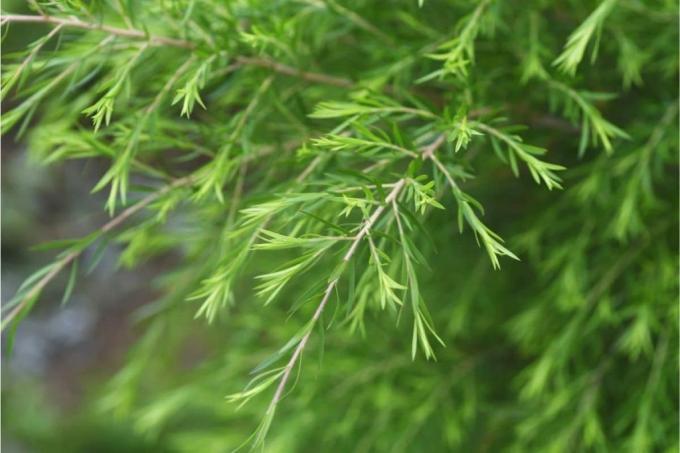
- Habit: shrub or small tree, evergreen, lanceolate leaves, silky hairy, white inflorescences, like a bottle-brush
- Height: 3 to 7 m
- Flowering period: May to June
- Location: sunny, humus soil, in this country bucket-keeping
- Special feature: overwintering light, 8 to 15 ° C, supplier of the tea tree oil
Scented geraniums (Pelargonium species)

- Habit: upright, delicate semicircular or pinnate leaves, flowers of different colors
- Height: 20 to 100 cm
- Flowering period: March to October
- Location: sunny, well-drained soil, kept in containers
- Special feature: many fragrances, e.g. B. Pelargonium crispum (lemon scent), Pelargonium "Prince of Orange", Pelargonium "Lillibet" (lemon scent)
Garden hyacinth (Hyacinthus orientalis)
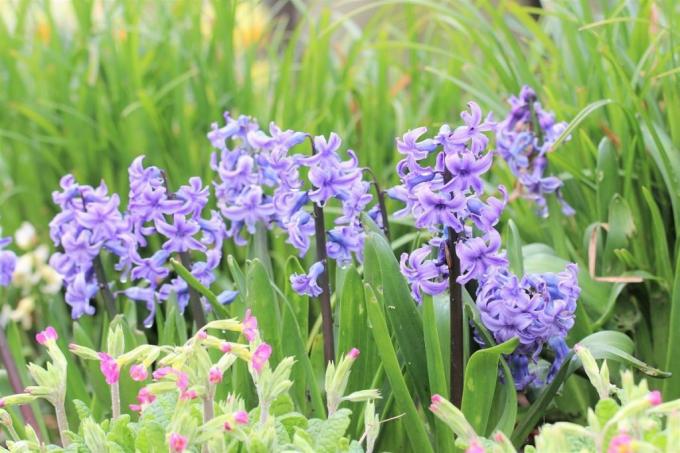
- Habit: bulbous plant, long, pointed leaves, bell-shaped flowers in a panicle, many colors
- Height: 15 to 30 cm
- Flowering period: March to May
- Location: sunny
- Special feature: can only Wasp queen expel, as the "common people" do not fly until June
Marigold (Calendula officinalis)
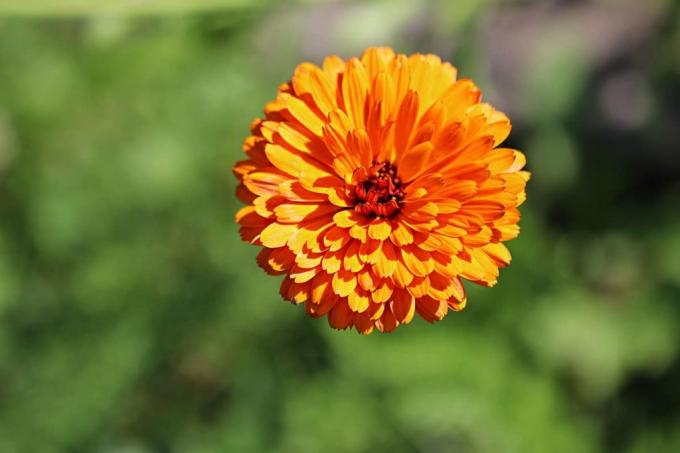
- Habit: annual, lanceolate leaves, basket-shaped flowers, yellow or orange
- Height: 30 to 70 cm
- Flowering period: June to September
- Location: sunny, well-drained soil, also kept in pots
- Special feature: also used as a remedy and in the kitchen, marigold ointment helps Wasp stings
Marigold (marigold)

- Habit: annual, upright, pinnate leaves, flower heads in yellow, orange, red or multicolored
- Height: 15 to 60 cm
- Flowering period: June to October
- Location: sunny to partially shaded, also suitable for tubs
- Special feature: older varieties have a strong smell
Frankincense plant (Plectranthus coleoides)
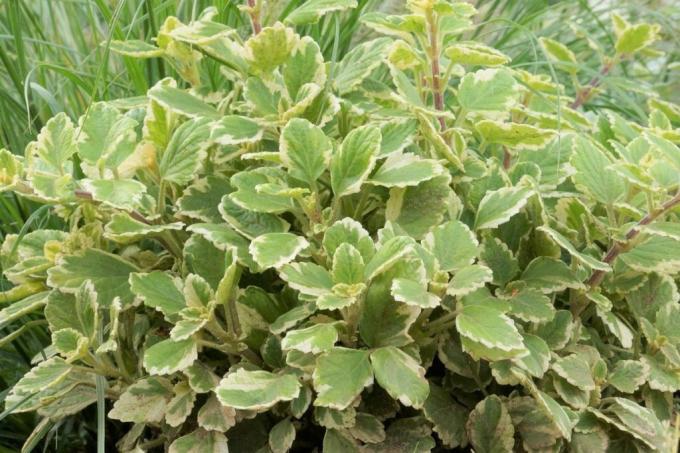
- Habit: upright, bushy, not hardy, slightly overhanging, light green leaves, edged with white, white to purple flowers
- Height: 40 to 100 cm
- Flowering period: May to August
- Location: sunny to shady, sandy-loamy soil, kept in containers
- Special feature: smell takes getting used to, even for people
Note: Plants can not only drive away wasps, they can also attract them, like the red angelica (Angelica gigas). Simply plant a few specimens far away from the balcony and terrace and the pests have another occupation.
frequently asked Questions
The animals can smell very well. You have an extremely sensitive sense of smell. So they know that the scent of flowers leads them to a rich source of food. In addition, they can also smell people's sweat of fear, which attracts even more conspecifics. There are also smells that they don't like, such as the smell of coffee and the smell of some plants. The animals can be trained on certain smells.
The animals can be very annoying, but they also have an important function in the ecosystem. Since they mainly feed on sap and visit as many flowers as possible, they make an active contribution to pollination. But they also eat aphids, mosquitoes, smaller caterpillars and flies. For this reason, the animals should not be killed. Various plants are therefore well suited for repelling.
No. Using the power of plants is a natural way of keeping pests away from the balcony and terrace. The plants are completely harmless to the animals. They just run away quickly because of the smell.



